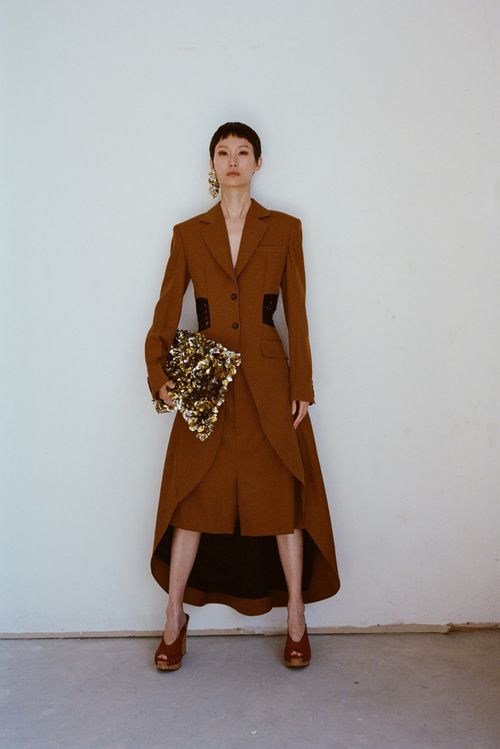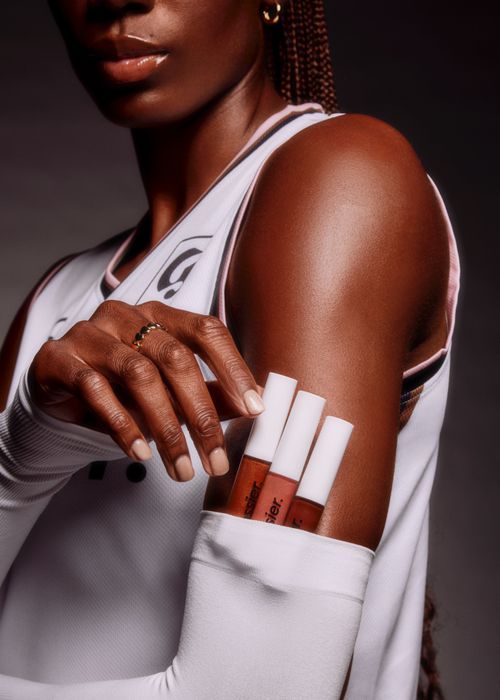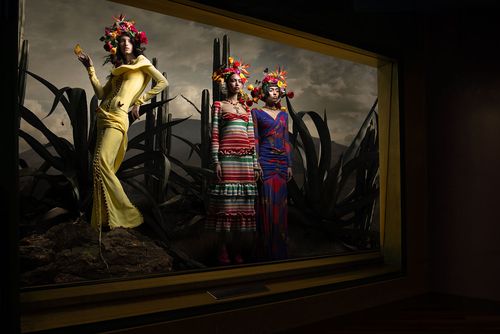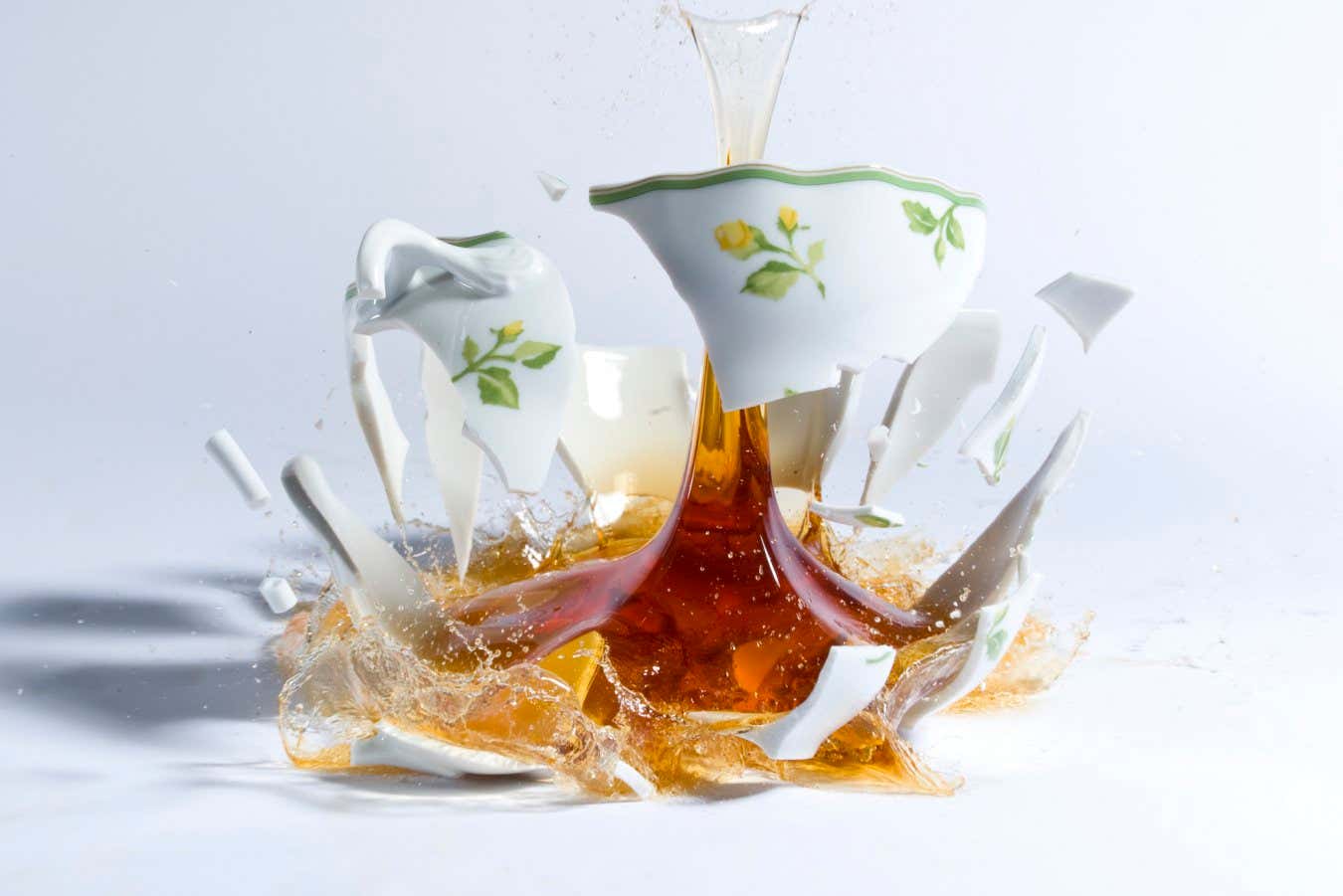Fashion
Why should your fashion business conduct an LCA?

As a professional in the fashion industry, especially if you are involved in sustainability, you have likely heard more and more about Life Cycle Assessment or at least about measuring environmental impact in the textile sector. This approach is gaining popularity for a simple reason: LCA provides a comprehensive perspective on how to reduce the environmental impact of your products. In this article, we explain why it is crucial for your fashion business to adopt LCA and how this tool can help you make more sustainable decisions, reducing both environmental impact and associated costs.
Fashion companies have the responsibility to reverse the unsustainable situation for both the planet and the industry itself
In the last 20 years, the fashion industry has significantly increased its production volume, creating items that are worn infrequently and of which only about 13% of the materials are recycled after use. Most of the discarded clothing ends up in landfills or is incinerated, further intensifying the industry’s impact on climate change. This uncontrolled growth in production and waste is closely tied to environmental degradation. Fashion companies have a responsibility to reverse this unsustainable situation for both the planet and the industry itself.
To understand their impact and take corrective measures, fashion brands must enforce transparency in their supply chain through data: what cannot be measured does not exist. The only way to report progress is through measurement, to understand where we are and how we are advancing towards established goals.
As the fashion industry faces upcoming sustainability regulations, Life Cycle Assessments are becoming increasingly important. The Directive on Green Claims and similar regulations prioritize LCA as the main tool for obtaining accurate impact data. At BCome, we rely on data rather than intuition to provide resources and solutions that enable textile companies to create honest products that respect nature while also enhancing their competitive edge.
For those who are not yet familiar with the potential of Life Cycle Assessment, its primary function is to quantify environmental impacts throughout a product’s life cycle. The main feature of this tool is its comprehensive approach. Instead of examining each process in isolation, LCA analyzes all the processes that make up a product’s life cycle, providing a holistic view of its environmental impact.
In the fashion industry, LCA serves as a versatile solution, helping companies understand environmental impacts and promoting sustainability. At BCome, we have established these objectives for our LCA tool:
- Help understand the environmental impacts associated with production compared to industry standards.
- Facilitate quick assessments of entire collections and product comparisons following international guidelines.
- Provide easily interpretable environmental indicators to identify areas for improvement.
- Empower consumers with credible sustainability data.
- Combat greenwashing and clarify concepts related to sustainability.
- Address significant environmental challenges within the fashion industry, including global warming, water scarcity, eutrophication, and the depletion of abiotic resources.
However, it is important to highlight that these objectives may not necessarily apply universally to all Life Cycle Assessments. Each company should define its own goals based on its specific needs.
Moreover, the versatility of LCA allows it to be used across several departments within a textile company for a wide range of purposes:
Enhanced product development
Having specific metrics and indicators for each item in a collection allows for the implementation of actions based on quantitative criteria aimed at reducing and eliminating the negative impacts of products at various stages of their life cycle. Identifying the most harmful stages for the planet is the first step toward creating garments with improved environmental performance.
“The main benefit of calculating the environmental impact of our products throughout their life cycle is to improve materials and products with the worst impact. Sharing information among suppliers encourages better practices and materials”
Fernando Nuñez Diaz, Head of Production at HOFF
More efficient production and waste management processes
LCA provides a comprehensive view of environmental impacts across all stages of a product’s life cycle, extending beyond just manufacturing. This holistic approach offers a clearer understanding of the true consequences of the system, identifying areas for focus and guiding specific actions to mitigate associated environmental risks. Additionally, it enhances supply chain efficiency by addressing environmental issues early on, preventing them from spreading into later stages.
“Assessing our environmental impact helps us gain greater self-awareness, giving us complete visibility over the entire value chain. This translates into transparency with our customers, as we share all the information with them, which helps build trust”
Marta Losada De Fuentes, Senior Buying & Sustainability at Scotta 1985
Higher environmental performance and profitability
Understanding the detailed impact of each stage in your value chain enables you to make decisions that optimize not only your environmental footprint but also the budgets allocated to each stage
Life Cycle Assessment allows working with a large amount of environmental data and information, making it possible to identify opportunities and critical points along the supply chain clearly and precisely. Thus, LCA, in addition to serving as a tool for environmental protection and resource conservation, has significant potential to reduce costs and improve the competitiveness of a fashion company due to its holistic approach. Understanding the detailed impact of each stage in your value chain enables you to make decisions that optimize not only your environmental footprint but also the budgets allocated to each stage.
“Thanks to the LCA results of our products, we became aware of the impact generated by our products made with virgin – recycled cotton yarn. For this reason, we decided to look for an alternative to replace virgin cotton, which consumes a lot of water and pesticides, with organic one”
Claudia Ermini, Sustainability & Innovation Specialist at Rifò
Better communication with the end customer
LCA translates a product’s life cycle into valuable environmental data that can be communicated to the end customer. As a result, this tool can be seamlessly integrated into a company’s marketing strategy to promote transparency with consumers. By leveraging the information provided by an LCA, a fashion brand can strengthen its communication with accurate data that supports its environmental commitment. This aligns with the goals of European directives aimed at preventing greenwashing, ensuring that companies back their environmental claims with specific data and demonstrate their connection to sustainability.
“A major advantage of calculating the environmental impact of our products throughout their life cycle is to convey this information to the end consumer so that they can appreciate it, just as they value the environmental impact of a new household device or food products”
Jorge Mataix, General Manager at Belda Lloréns
Great anticipation to legislative requirements
In recent years, legislation related to the textile sector has focused on a systemic shift towards sustainability, aiming to minimize environmental and social impacts. Legislation will be the driving force for the fashion industry to progress towards sustainability, and with LCA being the primary tool recommended by policymakers for assessing company impacts, this resource becomes the ultimate solution to help fashion companies meet the requirements set by new regulations.
“Environmental impact assessment provides us with a comprehensive and holistic understanding of each of our products, enabling us to make better decisions in design, production processes, and business planning. This allows us to continuously improve, educate our consumers with specific metrics, avoid greenwashing, and achieve our established goals”
Patricia Bori, Product & Sustainability Specialist at SAYE
Life Cycle Assessment enables fashion companies to create value. As the industry moves towards a more sustainable future, LCA emerges as a foundation for informed decision-making, fostering innovation and strengthening relationships with stakeholders.
If your fashion company is interested in conducting a Life Cycle Assessment and doesn’t know where to start, or if gathering and evaluating information has become a challenge for your business, BCome is your trusted partner for the support you need to ensure the accuracy of the results. We look forward to hearing about your needs, shall we talk?
Fashion Models
Diotima

Fashion
Rappers who Broke Genders Norms with Women‘s Clothing #diddy #youngthug #jadensmith #kidcudi #shorts

In recent years, several male rappers have embraced fashion styles that challenge traditional gender norms, incorporating elements typically associated with women’s fashion. This style is often characterized by fluidity, androgyny, and a bold rejection of conventional masculine stereotypes. Here’s a closer look:
1. **Androgynous Fashion**: Artists like Young Thug have been pioneers in breaking down gender barriers in rap fashion. He has famously worn dresses, skirts, and sheer fabrics in both his music videos and public appearances. This androgynous style reflects a growing acceptance of fluidity in both gender and fashion, allowing rappers to express themselves more freely without conforming to rigid masculine standards.
2. **High-Fashion Influence**: Some rappers, such as Lil Uzi Vert and Jaden Smith, mix high-fashion with feminine elements. They wear items like blouses, tight-fitting clothing, handbags, and even skirts, often drawing from high-end designers like Gucci, Louis Vuitton, and Rick Owens. Their style often combines traditionally feminine silhouettes with more neutral or streetwear-inspired pieces, creating a hybrid, avant-garde look.
3. **Makeup and Accessories**: Beyond clothing, some male rappers have embraced traditionally feminine accessories and makeup. Jewelry like pearl necklaces, earrings, nail polish, and eyeliner have become part of their everyday looks, further blurring the lines between masculine and feminine aesthetics. A$AP Rocky, for example, is known for wearing pearl necklaces and experimenting with bold fashion choices that push gender norms.
This trend reflects a larger cultural shift toward inclusivity and self-expression, showing that in rap, fashion can be a powerful tool for challenging stereotypes and expressing individuality.
source
Fashion Models
Video

Fashion Models
Top 10 Hottest Australian Female Models #australiahotmodels

In this video we will figure out the most hot and beautiful Australian hot models.
#australian #australiahotmodels #australiahotgirls
Top 10 Hottest Australian Female Models 2023 | Australian models
source
Fashion Models
Glossier

Fashion Models
Harper's Bazaar Mexico

-

 Sport7 hours ago
Sport7 hours agoJoshua vs Dubois: Chris Eubank Jr says ‘AJ’ could beat Tyson Fury and any other heavyweight in the world
-

 News1 day ago
News1 day agoYou’re a Hypocrite, And So Am I
-

 News8 hours ago
News8 hours agoIsrael strikes Lebanese targets as Hizbollah chief warns of ‘red lines’ crossed
-

 Technology6 hours ago
Technology6 hours agoiPhone 15 Pro Max Camera Review: Depth and Reach
-

 CryptoCurrency7 hours ago
CryptoCurrency7 hours agoAre there ‘too many’ blockchains for gaming? Sui’s randomness feature: Web3 Gamer
-

 CryptoCurrency7 hours ago
CryptoCurrency7 hours agoHelp! My parents are addicted to Pi Network crypto tapper
-

 CryptoCurrency7 hours ago
CryptoCurrency7 hours agoDecentraland X account hacked, phishing scam targets MANA airdrop
-

 CryptoCurrency7 hours ago
CryptoCurrency7 hours agoBitcoin miners steamrolled after electricity thefts, exchange ‘closure’ scam: Asia Express
-

 CryptoCurrency7 hours ago
CryptoCurrency7 hours agoDorsey’s ‘marketplace of algorithms’ could fix social media… so why hasn’t it?
-

 CryptoCurrency7 hours ago
CryptoCurrency7 hours agoSEC asks court for four months to produce documents for Coinbase
-

 Sport7 hours ago
Sport7 hours agoUFC Edmonton fight card revealed, including Brandon Moreno vs. Amir Albazi headliner
-

 CryptoCurrency6 hours ago
CryptoCurrency6 hours agoEthereum is a 'contrarian bet' into 2025, says Bitwise exec
-

 Science & Environment10 hours ago
Science & Environment10 hours agoHow one theory ties together everything we know about the universe
-

 CryptoCurrency7 hours ago
CryptoCurrency7 hours agoSEC settles with Rari Capital over DeFi pools, unregistered broker activity
-

 News5 hours ago
News5 hours agoBrian Tyree Henry on voicing young Megatron, his love for villain roles
-

 Science & Environment21 hours ago
Science & Environment21 hours agoQuantum time travel: The experiment to ‘send a particle into the past’
-

 Science & Environment7 hours ago
Science & Environment7 hours agoWe may have spotted a parallel universe going backwards in time
-

 CryptoCurrency7 hours ago
CryptoCurrency7 hours ago2 auditors miss $27M Penpie flaw, Pythia’s ‘claim rewards’ bug: Crypto-Sec
-

 CryptoCurrency7 hours ago
CryptoCurrency7 hours agoArthur Hayes’ ‘sub $50K’ Bitcoin call, Mt. Gox CEO’s new exchange, and more: Hodler’s Digest, Sept. 1 – 7
-

 CryptoCurrency7 hours ago
CryptoCurrency7 hours agoTreason in Taiwan paid in Tether, East’s crypto exchange resurgence: Asia Express
-

 CryptoCurrency7 hours ago
CryptoCurrency7 hours agoLeaked Chainalysis video suggests Monero transactions may be traceable
-

 CryptoCurrency7 hours ago
CryptoCurrency7 hours agoJourneys: Robby Yung on Animoca’s Web3 investments, TON and the Mocaverse
-

 CryptoCurrency7 hours ago
CryptoCurrency7 hours agoLouisiana takes first crypto payment over Bitcoin Lightning
-

 CryptoCurrency7 hours ago
CryptoCurrency7 hours agoCrypto whales like Humpy are gaming DAO votes — but there are solutions
-

 CryptoCurrency7 hours ago
CryptoCurrency7 hours agoFive crypto market predictions that haven’t come true — yet
-

 CryptoCurrency7 hours ago
CryptoCurrency7 hours ago$12.1M fraud suspect with ‘new face’ arrested, crypto scam boiler rooms busted: Asia Express
-

 CryptoCurrency7 hours ago
CryptoCurrency7 hours ago‘Everything feels like it’s going to shit’: Peter McCormack reveals new podcast
-

 Science & Environment10 hours ago
Science & Environment10 hours agoFuture of fusion: How the UK’s JET reactor paved the way for ITER
-

 CryptoCurrency7 hours ago
CryptoCurrency7 hours agoSEC sues ‘fake’ crypto exchanges in first action on pig butchering scams
-

 CryptoCurrency7 hours ago
CryptoCurrency7 hours agoFed rate cut may be politically motivated, will increase inflation: Arthur Hayes
-

 CryptoCurrency7 hours ago
CryptoCurrency7 hours agoBinance CEO says task force is working ‘across the clock’ to free exec in Nigeria
-

 CryptoCurrency7 hours ago
CryptoCurrency7 hours agoBitcoin price hits $62.6K as Fed 'crisis' move sparks US stocks warning
-

 CryptoCurrency7 hours ago
CryptoCurrency7 hours agoCZ and Binance face new lawsuit, RFK Jr suspends campaign, and more: Hodler’s Digest Aug. 18 – 24
-

 CryptoCurrency7 hours ago
CryptoCurrency7 hours agoCardano founder to meet Argentina president Javier Milei
-

 CryptoCurrency7 hours ago
CryptoCurrency7 hours agoCertiK Ventures discloses $45M investment plan to boost Web3
-

 CryptoCurrency7 hours ago
CryptoCurrency7 hours agoMemecoins not the ‘right move’ for celebs, but DApps might be — Skale Labs CMO
-

 CryptoCurrency7 hours ago
CryptoCurrency7 hours agoBitcoin bull rally far from over, MetaMask partners with Mastercard, and more: Hodler’s Digest Aug 11 – 17
-

 CryptoCurrency7 hours ago
CryptoCurrency7 hours agoTelegram bot Banana Gun’s users drained of over $1.9M
-

 CryptoCurrency7 hours ago
CryptoCurrency7 hours agoLow users, sex predators kill Korean metaverses, 3AC sues Terra: Asia Express
-

 CryptoCurrency7 hours ago
CryptoCurrency7 hours agoBlockdaemon mulls 2026 IPO: Report
-

 News5 hours ago
News5 hours ago“Beast Games” contestants sue MrBeast’s production company over “chronic mistreatment”
-

 News5 hours ago
News5 hours agoSean “Diddy” Combs denied bail again in federal sex trafficking case in New York
-

 News5 hours ago
News5 hours agoBrian Tyree Henry on his love for playing villains ahead of “Transformers One” release
-

 Technology3 days ago
Technology3 days agoYouTube restricts teenager access to fitness videos
-

 News9 hours ago
News9 hours agoChurch same-sex split affecting bishop appointments
-

 Politics2 days ago
Politics2 days agoTrump says he will meet with Indian Prime Minister Narendra Modi next week
-

 Science & Environment10 hours ago
Science & Environment10 hours ago‘Running of the bulls’ festival crowds move like charged particles
-

 Politics21 hours ago
Politics21 hours agoWhat is the House of Lords, how does it work and how is it changing?
-

 MMA7 hours ago
MMA7 hours agoUFC’s Cory Sandhagen says Deiveson Figueiredo turned down fight offer
-

 MMA7 hours ago
MMA7 hours agoDiego Lopes declines Movsar Evloev’s request to step in at UFC 307
-

 Football7 hours ago
Football7 hours agoNiamh Charles: Chelsea defender has successful shoulder surgery
-

 Football7 hours ago
Football7 hours agoSlot's midfield tweak key to Liverpool victory in Milan
-

 Fashion Models6 hours ago
Fashion Models6 hours agoMiranda Kerr nude
-

 Politics6 hours ago
Politics6 hours agoLabour MP urges UK government to nationalise Grangemouth refinery
-

 News4 days ago
News4 days agoIndia Now Moves from Deliberations to Deliverables on Crimes Against Women
-

 Science & Environment16 hours ago
Science & Environment16 hours agoQuantum forces used to automatically assemble tiny device
-

 Science & Environment10 hours ago
Science & Environment10 hours agoRethinking space and time could let us do away with dark matter
-

 Entertainment5 hours ago
Entertainment5 hours ago“Jimmy Carter 100” concert celebrates former president’s 100th birthday
-

 Science & Environment18 hours ago
Science & Environment18 hours agoSunlight-trapping device can generate temperatures over 1000°C
-

 News5 hours ago
News5 hours agoJoe Posnanski revisits iconic football moments in new book, “Why We Love Football”
-

 Health & fitness2 days ago
Health & fitness2 days agoWhen Britons need GoFundMe to pay for surgery, it’s clear the NHS backlog is a political time bomb
-

 Science & Environment20 hours ago
Science & Environment20 hours agoQuantum to cosmos: Why scale is vital to our understanding of reality
-

 Technology3 days ago
Technology3 days agoTrump says Musk could head ‘government efficiency’ force
-

 Science & Environment20 hours ago
Science & Environment20 hours agoX-ray laser fires most powerful pulse ever recorded
-

 Science & Environment19 hours ago
Science & Environment19 hours agoHow indefinite causality could lead us to a theory of quantum gravity
-

 Science & Environment18 hours ago
Science & Environment18 hours agoDoughnut-shaped swirls of laser light can be used to transmit images
-

 Science & Environment17 hours ago
Science & Environment17 hours agoWhy we are finally within reach of a room-temperature superconductor
-

 Science & Environment16 hours ago
Science & Environment16 hours agoBlack holes scramble information – but may not be the best at it
-

 Science & Environment16 hours ago
Science & Environment16 hours agoThe galactic anomalies hinting dark matter is weirder than we thought
-

 CryptoCurrency7 hours ago
CryptoCurrency7 hours agoTelegram CEO cannot leave France, OpenSea receives Wells notice, and more: Hodler’s Digest, Aug. 25 – 31
-

 CryptoCurrency7 hours ago
CryptoCurrency7 hours agoSolana unveils new Seeker device, says it’s not just a ‘memecoin phone’
-

 CryptoCurrency7 hours ago
CryptoCurrency7 hours agoCrypto scammers orchestrate massive hack on X but barely made $8K
-

 CryptoCurrency7 hours ago
CryptoCurrency7 hours agoBitcoiners are ‘all in’ on Trump since Bitcoin ’24, but it’s getting risky
-

 CryptoCurrency7 hours ago
CryptoCurrency7 hours agoReal-world asset tokenization is the crypto killer app — Polygon exec
-

 Science & Environment10 hours ago
Science & Environment10 hours ago‘Sound laser’ is the most powerful ever made
-

 Science & Environment10 hours ago
Science & Environment10 hours agoJupiter’s stormy surface replicated in lab
-
Politics10 hours ago
Owen Paterson loses ECHR appeal against report that preceded downfall | Owen Paterson
-

 CryptoCurrency7 hours ago
CryptoCurrency7 hours agoDuckDuckGo ranks Etherscan phishing websites in top results
-

 CryptoCurrency7 hours ago
CryptoCurrency7 hours agoVonMises bought 60 CryptoPunks in a month before the price spiked: NFT Collector
-

 CryptoCurrency7 hours ago
CryptoCurrency7 hours agoVitalik tells Ethereum L2s ‘Stage 1 or GTFO’ — Who makes the cut?
-

 CryptoCurrency7 hours ago
CryptoCurrency7 hours agoEthereum falls to new 42-month low vs. Bitcoin — Bottom or more pain ahead?
-

 CryptoCurrency7 hours ago
CryptoCurrency7 hours agoETH falls 6% amid Trump assassination attempt, looming rate cuts, ‘FUD’ wave
-
Business7 hours ago
Thames Water seeks extension on debt terms to avoid renationalisation
-
Business6 hours ago
How Labour donor’s largesse tarnished government’s squeaky clean image
-
Business6 hours ago
UK hospitals with potentially dangerous concrete to be redeveloped
-
Business5 hours ago
Axel Springer top team close to making eight times their money in KKR deal
-

 News5 hours ago
News5 hours agoSean “Diddy” Combs denied bail again in federal sex trafficking case
-

 News5 hours ago
News5 hours agoBrian Tyree Henry on voicing young Megatron, his love for villain roles
-
Politics5 hours ago
Why is Sue Gray at the centre of a new political storm? | Sue Gray
-

 News3 hours ago
News3 hours agoWoman sues Florida sheriff after mistaken arrest lands her in jail on Christmas
-

 News4 hours ago
News4 hours agoGlobal Tensions and Press Freedom
-

 News9 hours ago
News9 hours agoPolice chief says Daniel Greenwood 'used rank to pursue junior officer'
-

 Technology2 days ago
Technology2 days agoIs carbon capture an efficient way to tackle CO2?
-

 Science & Environment10 hours ago
Science & Environment10 hours agoPhysicists have worked out how to melt any material
-

 Politics22 hours ago
Politics22 hours agoKeir Starmer facing flashpoints with the trade unions
-

 CryptoCurrency2 days ago
CryptoCurrency2 days agoBitcoin reclaims $60K and ‘this time is different,’ says analyst
-

 Science & Environment1 day ago
Science & Environment1 day agoWho owns the Moon? A new space race means it could be up for grabs
-

 Health & fitness2 days ago
Health & fitness2 days agoWhy you should take a cheat day from your diet, and how many calories to eat
-

 Fashion9 hours ago
Fashion9 hours agoWomen 's Fashion Trends 2022 Ft. Nikita Jain | #Shorts – Myntra
-

 Technology8 hours ago
Technology8 hours agoFivetran targets data security by adding Hybrid Deployment





You must be logged in to post a comment Login